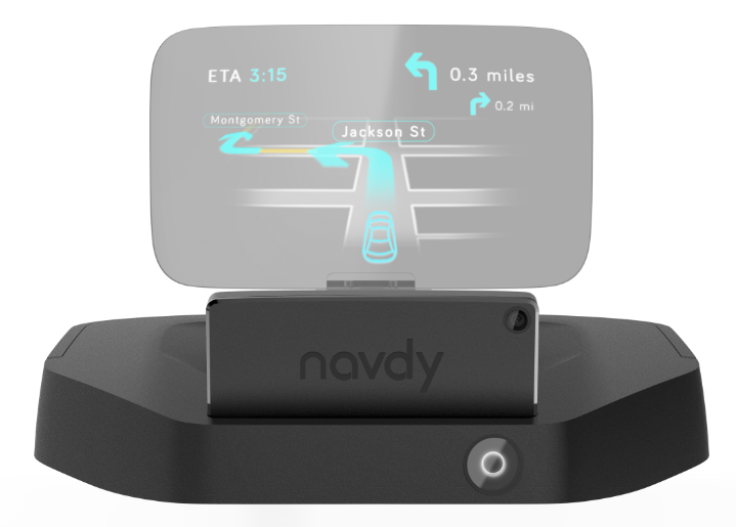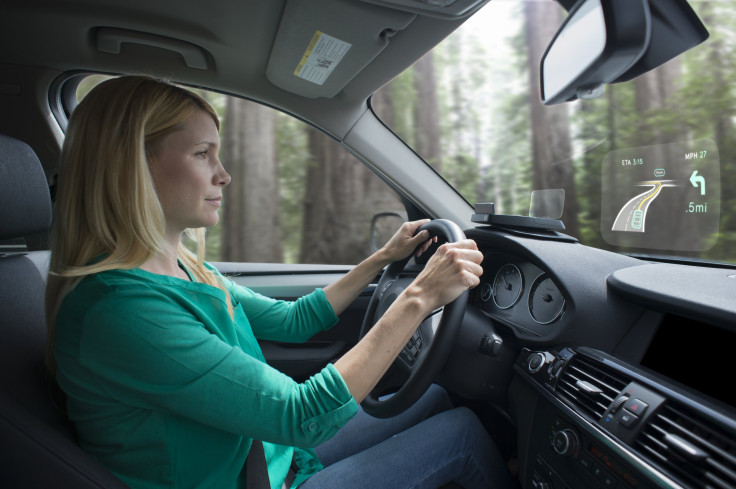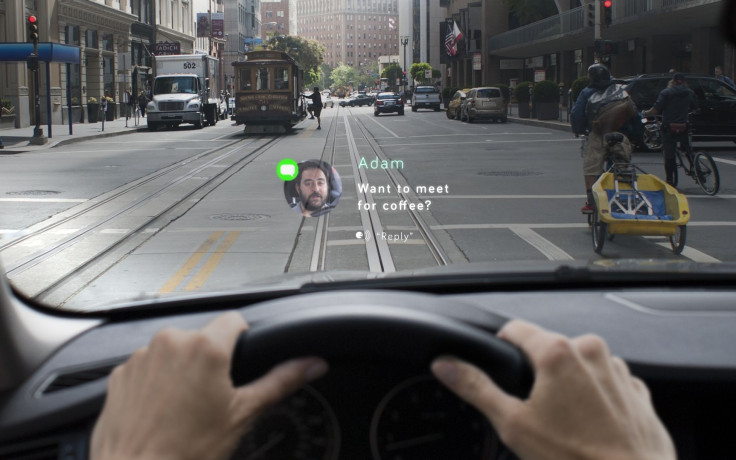Navdy: Watch Startup Unveil 'Google Glass For Your Car' [VIDEO]

A new startup is aiming to change the way drivers interact with their smartphones by calling itself the “Google Glass for your car.” Navdy Inc. announced Tuesday the company is launching its pre-order campaign for a head-up display (HUD) that allows drivers to access their smartphone’s apps while also keeping their eyes on the road by using touchless gestures.
Doug Simpson, cofounder and chief executive officer of Navdy, spoke to International Business Times about how the new device works “to create a safer, highly intuitive driving experience.”
What is Navdy?

The San Francisco-based startup, founded by Simpson and serial inventor Karl Guttag, aims to create a safer driving experience by combining a high-quality projection display with voice and gesture controls so a user never has to look down while navigating, communicating or accessing music apps such as Spotify, Pandora, iTunes and Google Play.
“Navdy is a head-up display that lets you use your favorite apps in the car while keeping your eyes on the road,” Simpson told IBTimes. “It’s actually the world’s first head-up display that works in any car and it’s the world’s first head-up display that lets you use touchless gestures to control it.”
The company said it uses the same technology used by airline pilots to keep their eyes on the runway while landing an airplane.
“The biggest issue is eyes on the road and having to look down at a phone or a touch screen built into the car’s console. All of that takes your eyes off the road,” Simpson said. “We’re really trying to solve that problem as well as provide an experience that’s just really compelling and really natural.”
How Navdy Works

With Navdy, a user’s apps appear as a transparent image directly within their field of view that appears to float six feet in front of their windshield. The device, which works on iPhone and Android smartphones, is designed so a user can maintain their focus on the road while viewing navigation instructions, incoming calls or app notifications.
“You get your turn-by-turn directions on Navdy. You’re able to control your phone calls, control your music and you’re able to see notifications and text messages from your phone,” Simpson said.
The device can be mounted on any car dashboard and is powered by plugging in to the onboard computer, available in all cars produced since 1996. Navdy links to a user's car and is able to display information on their windshield such as speed, RPM, miles-to-empty, fuel economy stats, tire-pressure warning or battery-voltage warning from the car’s computer.
“As a user you just place the device on the dash right in front of the steering wheel and then it connects to your phone through Bluetooth,” Simpson said. “There’s a tiny projector that’s built into the device and it projects a transparent image that appears to float outside your windshield. It’s focused out in the distance so the road stays in focus while you view the content.”
Navdy’s Pre-Order Campaign Kicks Off in August

Navdy kicked off its 30-day pre-order campaign on Aug. 5, 2014, and the company is offering a $200 discount to early customers. The projected retail price for the device is $499.
Simpson said the idea for the startup came out of his own frustration while trying to maneuver navigation instructions and apps in his car.
“If you’re using a navigation app on your phone and a phone call comes in, suddenly your navigation instructions disappear and then, even worse, you have audio turn-by-turn directions talking over your conversations,” Simpson said. “We really wanted to improve that whole experience.”
The startup currently has 12 employees and is planning to raise $60,000 through its pre-sales to get backers on board and support initial production efforts. Navdy is expected to ship the device to customers in early 2015.
© Copyright IBTimes 2024. All rights reserved.












